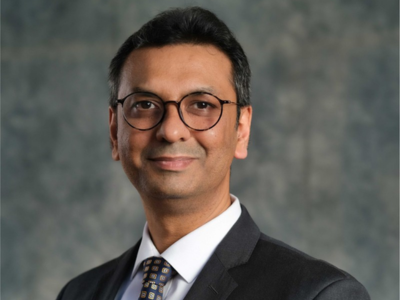Listen to this article
I could not stop myself from writing a small note on this day (22 January 2024). This is a very special day for India: the much-anticipated Ram Mandir consecration or Pran Pratishtha ceremony is to be held today in the temple town of Ayodhya in Uttar Pradesh. A few years back, I had written about some investment lessons by borrowing a chapter from Ramayana. I had presented the same with some modifications.
Ramayana is the ancient Indian epic that describes the story of Lord Rama. It is divided into seven Kanda (sections) and 500 sargas (chapters). While there is a lot to learn about life in each of these chapters, I have chosen one of the chapters in the Yuddha Kanda. It talks about the time when Rama’s brother Lakshmana was struck by a poisonous arrow during a battle with Ravana’s son Meghnada. The royal physician, Sushena, requests Lord Rama for four herbs to prepare a mixture to heal the wound and bring Lakshmana back from his near-death condition. The four herbs are: Mruthasanjeevani (restorer of life), Vishalyakarani (remover of arrows), Sandhanakarani (restorer of the skin / bone) and Savarnyakarani (restorer of skin colour).
Lord Rama entrusts Hanuman with the job to get these herbs immediately from the Dronagiri Hills in the Himalayan range. When Hanuman reaches the hill, he is not able to identify these specific herbs from the multitude of them and hence decides to carry the entire hill back to the Lord Rama. Ultimately, the right mixture is prepared and administered to Lakshmana and he is revived back to consciousness.
For the first time in its history, the Indian equity market has had eight consecutive calendar years of positive returns. Important benchmarks like Nifty 50 and Sensex have made a new high. Valuations have moved to fair value zone in many sectors, and in some sectors, above fair value. Now more than ever, investors need to carefully screen the quality and longevity of the businesses that they are investing in. The right businesses will grow their intrinsic value and sustain their valuations and hence create wealth over the long-term. In this note, I want to use the four herbs of Lord Rama to set the criteria for creation or stock selection of a portfolio in current conditions.
The selection criteria
When Hanuman reached the Himalayas and landed on the Dronagiri Hill, it was in the dark of the night. Lord Rama had him told the herbs he must procure will have a radiant glow to them. However, when he scanned the area, there were multiple herbs, all with their unique glow. For the investors too, there can be confusion when so many stocks are moving up so quickly. In a bull market, the crowd is often driven by narratives, valuations move up across the board, companies that look cheap on quick calculations of valuation (like price to earnings, price to book value) promptly get repriced. Hence, now more than ever, a thorough analysis of quality of the business and management becomes extremely important.
Here are the herbs that can help screen the businesses and managements better:
Mruthasanjeevani - Capability to survive and grow
When you are investing for a long-term, one of the first and obvious criterion to screen is that the business you are investing in survives for the long-term.
There are many changes a business faces like technology disruptions, regulatory changes, changes in consumer behaviour. You want to ensure that the business you are investing in, is on the positive side of these changes. This is where an investor can benefit from tracking megatrends: long-term changes that have a profound impact on the economy, businesses and companies. Companies that are on the right side of the megatrends have the tailwinds on their side (potential) to grow for a long-term.
Vishalyakarani – Protection against enemy weapons
When the business has good economics, competition is bound to come in and attack either the company’s market share, profit share or return ratios.
A business which has a moat or a competitive advantage to fend off or resist that attack can be a strong contender for long-term investing.
Sandhanakarani - Ability to recover from short term problems
A good business run by a competent management is prepared for any short term down cycle in the industry. Typically, companies that are over-leveraged run into trouble during downturns. Companies with healthy margins, balance sheet and cashflows are better positioned to recover from any downcycle or short-term crisis that the business runs into.
Savarnyakarani - Ability to do return to normal after significant capital investment phase
Looking for companies with perfect return ratios doesn’t mean that an investor should discourage new capital investments or expansions by the company. In fact, it is in the interest of the investor that the management of the investee company allocates capital to continue to generate healthy returns or better returns in the future. To capitalise on the growth opportunities, expand the moat (sustain the competitive advantage) and prepare for long-term changes in the business, the management must take the right capital allocation decisions. It is important that after a phase of significant capital investment or diversification, the business comes back to the healthy returns normally enjoyed by it.
The herbs worked for Lakshmana, who recovers and joins Lord Rama in winning the war against Ravana. Ultimately, valuations and stock prices depend on the quality of the business and the management. The ones mentioned above, are some of the pointers that can potentially help identify the right businesses that can be long-term winners.
Nimesh Chandan is the CIO of Bajaj Finserv Mutual Fund. The views expressed in this article are those of the author and do not reflect the views of Cafemutual.





